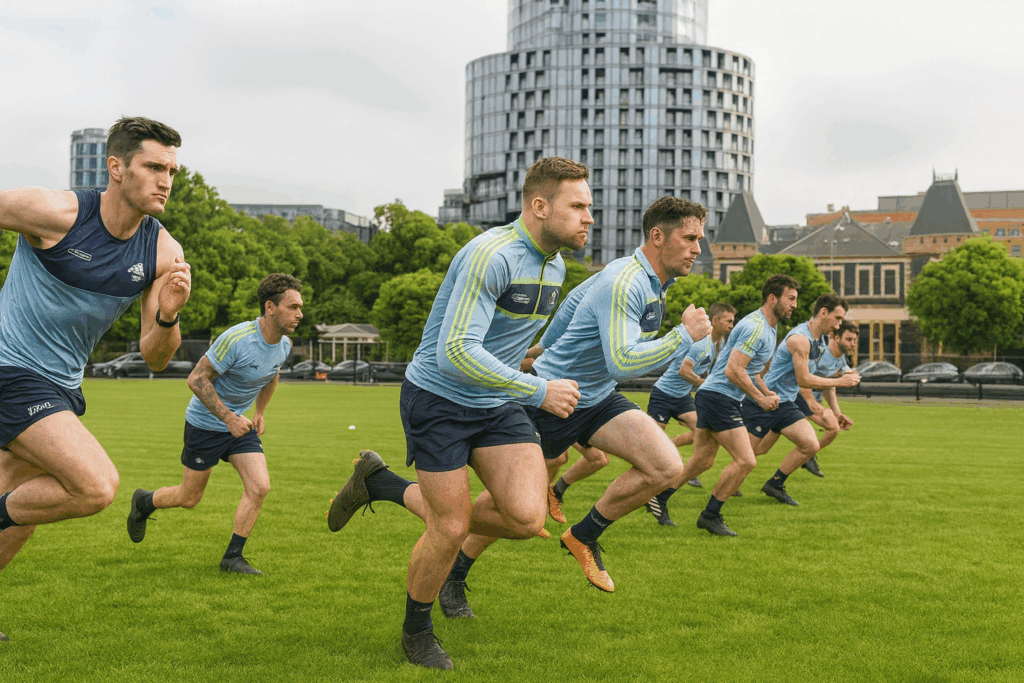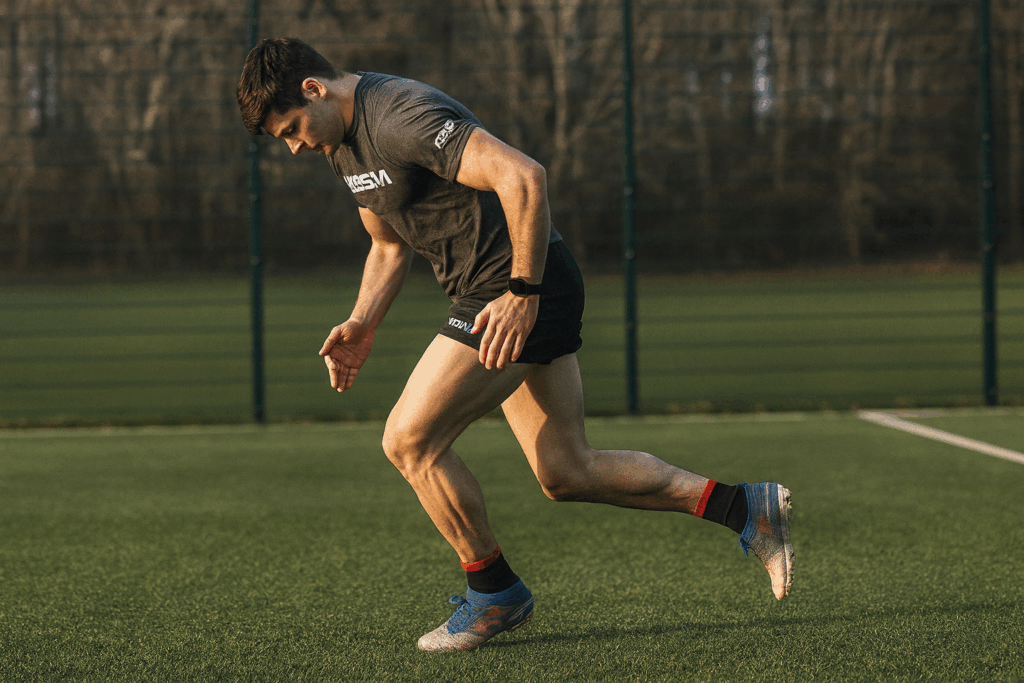Introduction
A RAMP warm-up can be used to prepare athletes physically and mentally for exercise or competition. Beyond simply “getting loose,” a well-designed warm-up increases muscle and core temperature, boosts blood flow, and improves joint viscosity. It also disrupts transient connective tissue bonds, ultimately enhancing performance.
Warm-ups are more than a routine; they’re a form of “performance preparation” that primes the body for maximal output during training or competition. This blog explores the principles of effective warm-ups using the proven RAMP warm-up protocol.
The RAMP Protocol: A Framework for Effective Warm-Ups
The RAMP protocol, developed by Dr. Ian Jeffreys, has revolutionised warm-up practices by creating a structured approach to maximise performance while optimising the time spent warming up. The protocol is broken into three phases:
- Raise
- Activate and Mobilise
- Potentiate
Each phase serves a specific purpose and builds upon the last to fully prepare athletes for peak performance.
Phase 1: Raise
The goal of the Raise phase is to elevate physiological parameters, including:
- Body Temperature
- Heart Rate
- Respiration Rate
- Blood Flow
- Joint Viscosity
Key Tips for the Raise Phase:
Instead of traditional, outdated practices like jogging laps, this phase should focus on dynamic movements that incorporate sport-specific skills and key movement patterns. These exercises not only achieve the aims of the Raise phase but also improve overall movement quality.
- Example Movements:
- High knees
- Butt kicks
- Arm circles
- Dynamic lunges
Phase 2: Activate & Mobilise
This phase combines two objectives:
- Activate Key Muscle Groups: Preparing muscles that will be heavily involved in the upcoming session.
- Mobilise Key Joints: Ensuring joints are prepared for dynamic movement through mobility exercises rather than static stretches.
Designing the Activate & Mobilise Phase:
Warm-up exercises in this phase should be tailored to the athlete’s needs and the demands of their sport. For example:
- Activation Exercises: Target muscles using prehab-style movements to enhance stimulation (e.g., glute bridges, banded clams).
- Dynamic Mobility Exercises: Use movements like leg swings or thoracic rotations to improve range of motion.
- Example Movements:
- Walking lunges with a twist
- World’s Greatest Stretch
- Scapular push-ups
Phase 3: Potentiate
The Potentiate phase primes athletes for the intensity of their session or competition. It is the final and most sport-specific phase of the warm-up.
Objectives of the Potentiate Phase:
- Gradually increase the intensity to match competition or training demands.
- Enhance performance through post-activation potentiation, where high-intensity exercises improve subsequent muscular performance.
Examples of Potentiate Activities:
- For sprinters:
- Plyometric exercises
- Sprint drills of increasing intensity
- For team sports like Gaelic Football:
- Ball-handling drills
- Evasion skills combined with high-intensity sprints
Benefits of the RAMP Approach
- Efficient Use of Time: By integrating skill-based exercises, warm-ups become an opportunity to develop athletic qualities instead of simply preparing for activity.
- Improved Performance: Athletes achieve optimal physiological readiness without inducing fatigue.
- Reduced Risk of Injury: Dynamic activation and mobilisation prepare the body for explosive movements and reduce injury risk.
Conclusion
The RAMP protocol provides a structured, effective framework for designing warm-ups that go beyond traditional methods. By focusing on raising physiological readiness, activating and mobilising key muscles and joints, and potentiating performance through sport-specific drills, athletes can optimise their preparation and maximise their potential.
Warm-ups are not just a prelude to activity—they are an integral part of performance preparation. Incorporate the RAMP protocol into your routine to unlock better performance and reduce the risk of injury.





